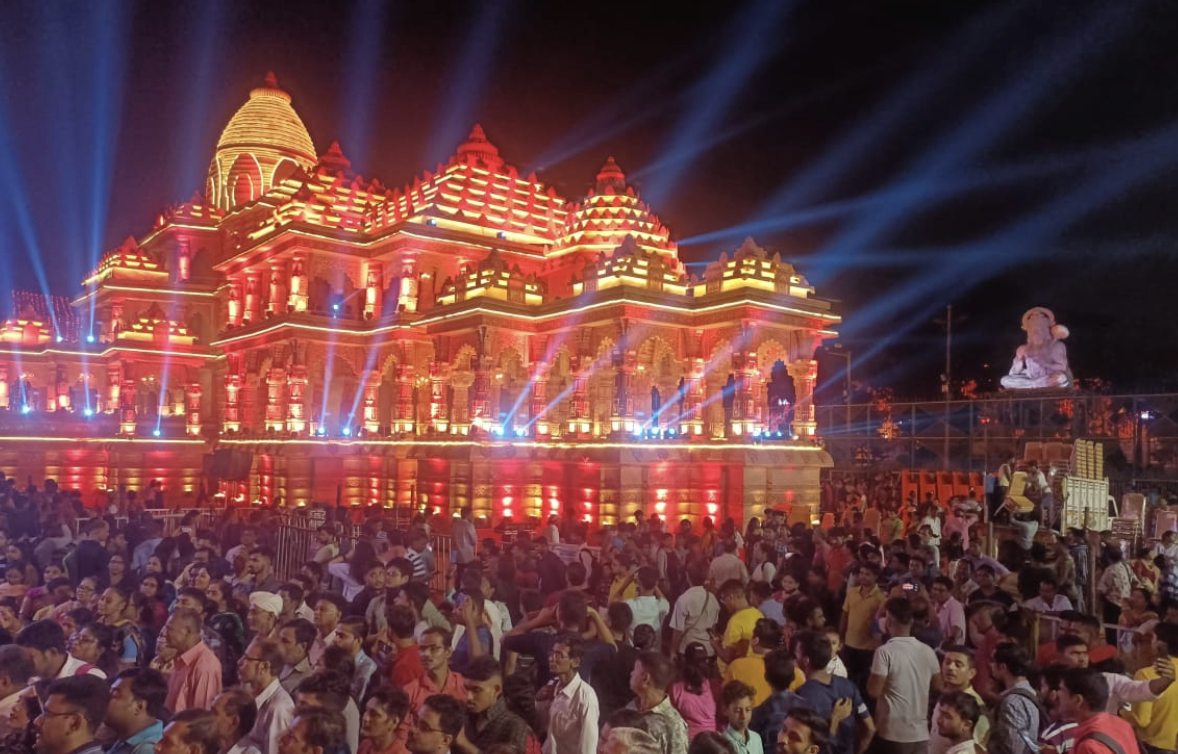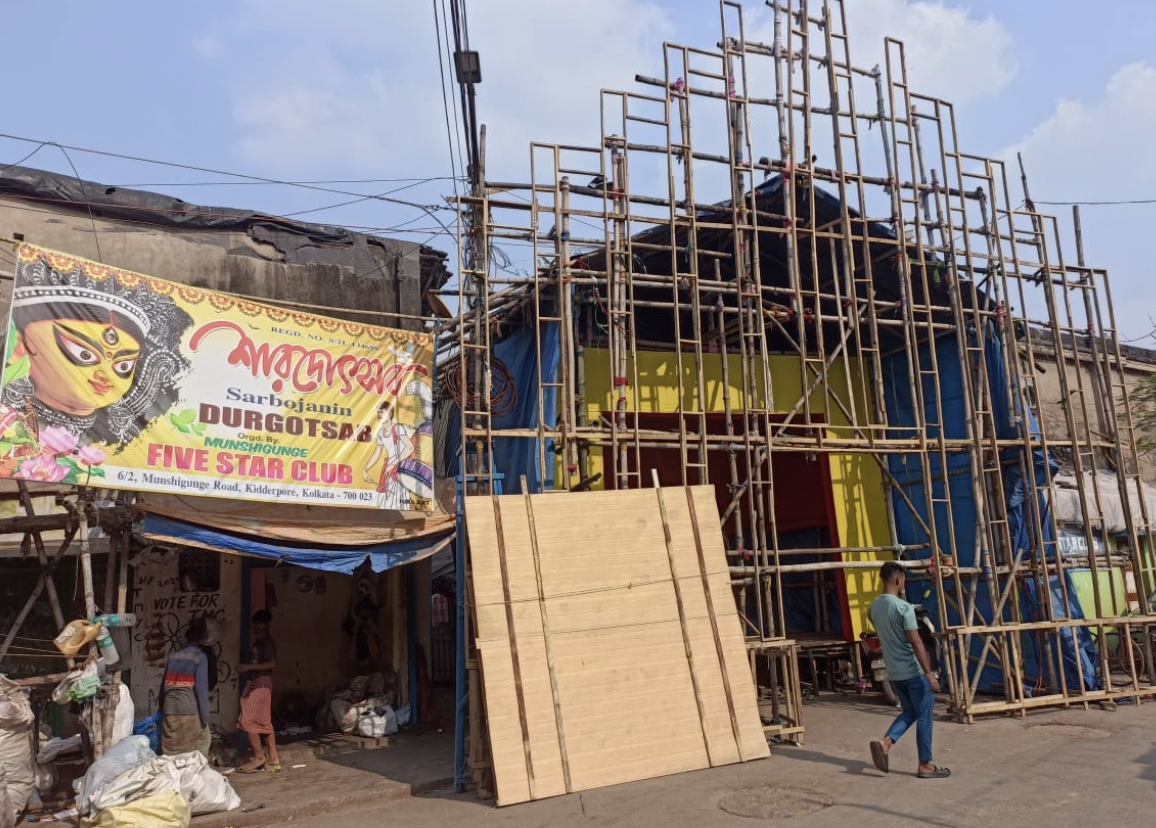'Ayodhya', Khidirpur and the Spirit of the Community Durga Puja in Kolkata
Kolkata: On Monday, October 16, Union home minister Amit Shah inaugurated the Santosh Mitra Square Puja pandal in Kolkata. The pandal had the Ram temple in Ayodhya as its central theme.
The Santosh Mitra Square Sarbojanin Durgotsab committee, known for organising one of Kolkata's grandest and most spectacular pujas every year, has promised to create an "Ayodhya-like atmosphere." This includes life-size idols and 3D illuminations of the Hindu deities Ram and Hanuman, and the recreation of rituals that usually take place on the banks of the Saryu river in Ayodhya.
Social media has been flooded with images of the pandal and its decorations.
Shah said at the inauguration that the people of Kolkata have already celebrated the Ayodhya Ram temple’s inauguration through this Durga Puja pandal.

The 'Ayodhya Temple' at Santosh Mitra Square in Kolkata. Photo: Joydeep Sarkar
The communal history preceding the construction of the Ram temple is a known fact and in many ways is at a sharp contrast to the the world a mere eight kilometres away from the Santosh Mitra Square puja.
At Munshiganj in Khidirpur, Hindus and Muslims in a modest neighbourhood are worried. Their concerns centre around unfinished pandals and financial constraints for the common community puja they organise. Communalism and politics are missing here.
Munshiganj, located in Muslim-majority area of Khidirpur, is one of the red-light districts in Kolkata. The community puja celebrated here has a history that spans decades, its origins lost to memory.
It all began several decades ago when the Muslim neighbours joined hands with the few Hindu families residing here, determined to ensure that no one was left out of the celebration. Muslims residents call the goddess 'ma' – or mother.
Organised by the local Five Star Club, this Puja lacks the grandeur typically associated with community pujas in Kolkata. While the larger pujas like Santosh Mitra Square, have already drawn thousands of visitors, the small pandal at Munshiganj, devoid of intricate artistry or a specific theme, is still under construction. With Durga Puja only a few days away, Mirza Saifudding Baig, the secretary of the puja organising committee, is visibly anxious. Every evening after work, Saifuddin Baig meets with Latif, Al Amin, Joy, and others to inspect the pandal's progress.

The Munshiganj pandal, being organised by Muslims and Hindus. Photo: Joydeep Sarkar/The Wire
“This is a festival for all of us. We all live here. Ram Pal, our local potter makes the idol. Joy and Bikash look after the ritual part. Everyone in the mohalla contributes. Sex workers in the locality send donations. But they do not take part in the puja despite our requests," said Mohammad Latif, a key organiser.
"Who will we press for money? Whatever people give, we collect that and organise this," he added.
The committee has struggled to collect Rs 1,30,000. The Chief Minister's grant of Rs 70,000 to each puja committee has helped, they said. The organisers gift clothes to the poor and also organise lunches.
"I am a Hindu, but festivals like Eid and Muharram are just as much a part of my celebrations. My entire family takes part in these events," added Bikas Roy, one of the organisers.
This amalgamation of cultures has fostered a strong sense of togetherness in the neighbourhood.
Muslim women also participate in 'sindoor khela,' smearing each other with vermillion on Bijoya Dashami.
(Translated from the Bengali original by Aparna Bhattacharya)
This article went live on October eighteenth, two thousand twenty three, at eighteen minutes past four in the afternoon.The Wire is now on WhatsApp. Follow our channel for sharp analysis and opinions on the latest developments.




